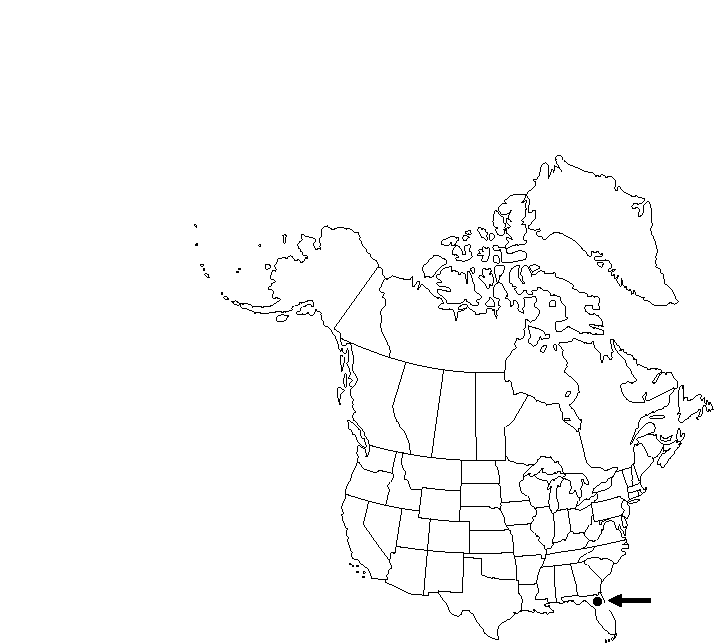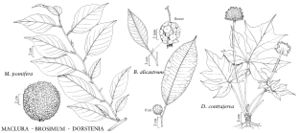Difference between revisions of "Dorstenia contrajerva"
Sp. Pl. 1: 121. 1753.
imported>Volume Importer |
imported>Volume Importer |
||
| Line 56: | Line 56: | ||
|publication year=1753 | |publication year=1753 | ||
|special status=Illustrated;Introduced | |special status=Illustrated;Introduced | ||
| − | |source xml=https:// | + | |source xml=https://bitbucket.org/aafc-mbb/fna-data-curation/src/2e0870ddd59836b60bcf96646a41e87ea5a5943a/coarse_grained_fna_xml/V3/V3_623.xml |
|genus=Dorstenia | |genus=Dorstenia | ||
|species=Dorstenia contrajerva | |species=Dorstenia contrajerva | ||
Latest revision as of 21:50, 5 November 2020
Herbs, to 4.5 dm. Stems covered with persistent petiole bases. Leaves: stipules persistent; petiole 8-25 cm. Leaf blade oblong-ovate, deltate-ovate, or orbiculate, entire or deeply pinnately lobed, 6-20 × 7-22 cm, pubescent. Inflorescences: peduncle 7-25 cm; receptacle flat, curved, or undulate, quadrangular or lobed, to 3.5 cm square. Drupes somewhat globose. Seeds yellowish, explosively expelled. 2n = 30.
Phenology: Flowering all year.
Habitat: Moist, disturbed sites
Elevation: 0-20 m
Distribution

Introduced; Fla., s Mexico, Central America, n South America.
Discussion
Dorstenia contrajerva is a weed in greenhouses and nurseries; it rarely occurs in the wild in North America. It is sometimes cultivated as a house plant.
Selected References
None.
Lower Taxa
None.
